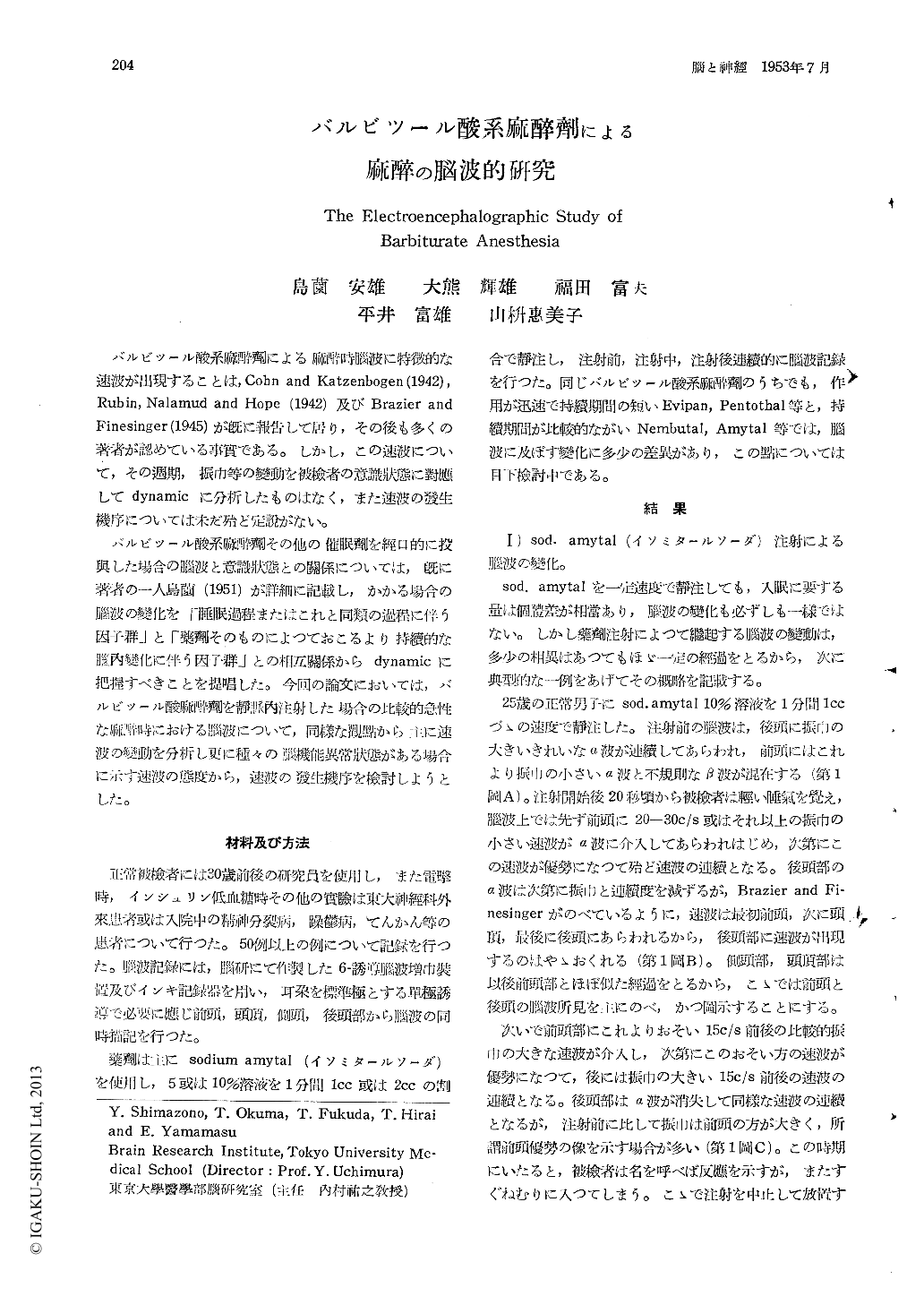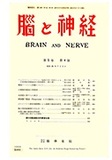Japanese
English
- 有料閲覧
- Abstract 文献概要
- 1ページ目 Look Inside
バルビツール酸系麻酔劑による麻酔時腦波に特徴的な速波が出現することは,Cohn and Katzenbogen (1942), Rubin, Nalamud and Hope (1942)及びBrazier and Finesinger (1945)が既に報告して居り,その後も多くの著者が認めている事實である。しかし,この速波について,その週期,振巾等の變動を被檢者の意識状態に對應してdynamicに分析したものはなく,また速波の發生機序については未だ殆ど定説がない。
バルビツール酸系麻酔劑その他の催眠劑を經口的に投與した場合の腦波と意識状態との關係については,既に著者の一人島薗(1951)が詳細に記載し,かかる場合の腦波の變化を「睡眠過程またはこれと同類の過程に伴う因子群」と「藥劑そのものによつておこるより持續的な腦内變化に伴う因子群」との相互關係からdynamicに把握すべきことを提唱した。今回の論文においては,バルビツール酸麻酔劑を靜脈内注射した場合の比較的急性な麻酔時における腦波について,同樣な觀點から主に速波の變動を分析し更に種々の腦機能異常状態がある場合に示す速波の態度から,速波の發生機序を檢討しようとした。
1) A series of changes in the EEG brought about by intravenous injection of sodium amytal was described.
2) The characteristic fast waves caused by intravenous injection of sodium amytal were roughly classified into FA of about 15 c/s waves of relatively large amplitude, and FB of rela-tively small amplitude, the frequency of which is around 25 c/s or over.
3) When a stimulus is applied in various stages of anesthesia there occurs a change in EEG which would correspond to lesser degree of anesthesia and at that time the behavior shown by FA and FB seems to be analogous to the behavior of alpha and beta waves at the time of non-anesthetized case (awaking period and during natural sleep).
4) In instances where slow waves are present before anesthesia, the slow waves appear in response to stimulation at the time when anesthetized normal subjects show alpha waves or FA.
5) No fast waves can be elicited by adminst-ration of sodium amytal in certain stages of insulin hypoglycemia, immediately after elect-rically induced convulsions and in deep anes-thesia etc., when the brain function is disturb-ed about a certain degree. As the functional state of the brain recovers due to administra-tion of glucose or spontaneously with the lapse of time the fast waves could not be seen before appear very clearly.
(Changes of the cortical and subcortical activi-ties during anesthesia are now under investiga-tion and will be published soon by the same authors.)

Copyright © 1953, Igaku-Shoin Ltd. All rights reserved.


